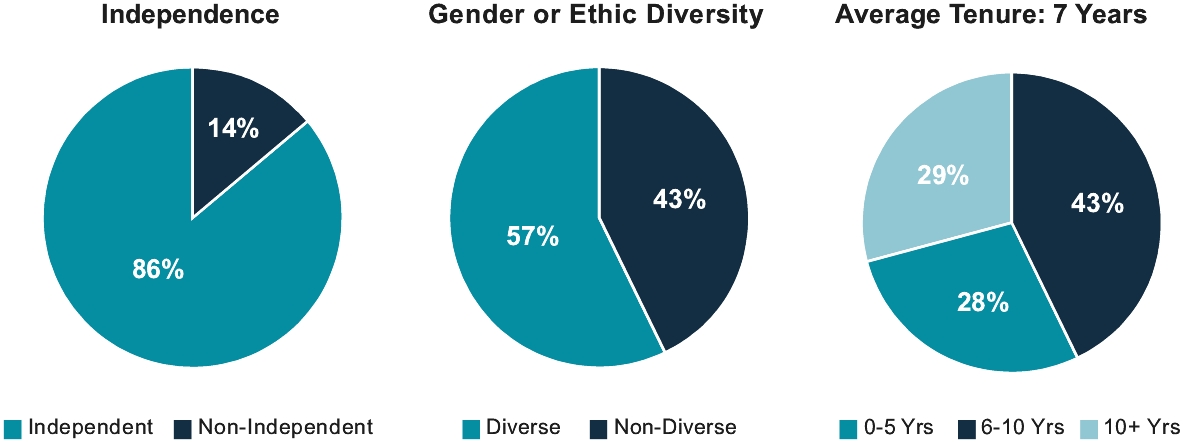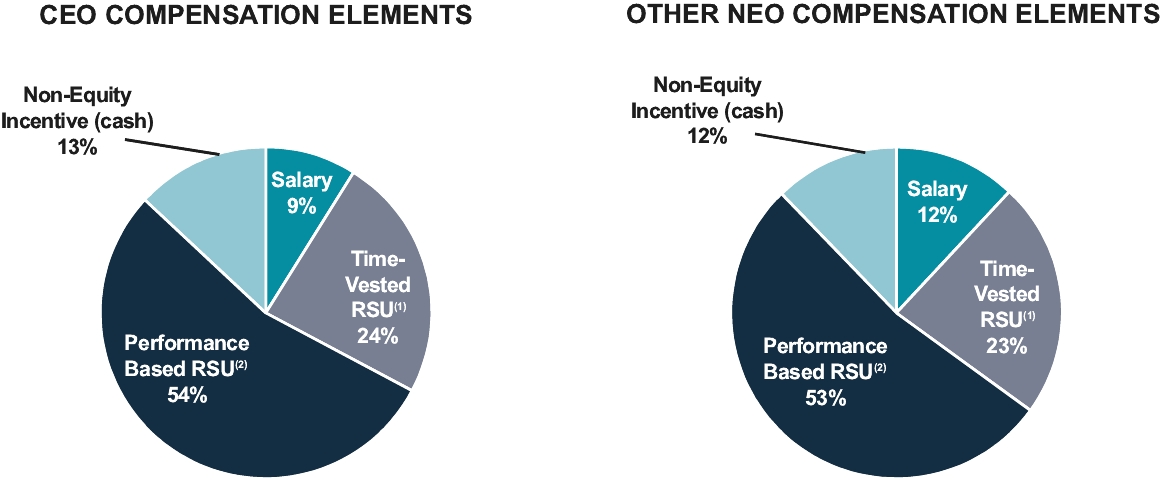Stock Ownership Guidelines
To better align the company’s non-executive directors’ and executives’ financial interests with those of our stockholders, the Board of Directors has established stock ownership guidelines for non-executive directors and executive officers. Our Corporate Governance Guidelines state that (i) each non-employee director should hold at least the greater of (a) 5,000 shares or (b) shares equal in value to three times (3x) the annual cash retainer for service as a director; (ii) the Chief Executive Officer shall hold at least the greater of (a) 10,000 shares or (b) shares equal in value to three times (3x) the Chief Executive Officer’s annual base salary; and (iii) each “executive officer” (other than the Chief Executive Officer) should hold at least the greater of (a) 10,000 shares or (b) shares equal in value to two times (2x) the executive officer’s annual base salary. Shares counted for this purpose include shares owned by the director or executive officer, shares owned jointly with, or separately by, spouse and/or minor children, including shares held in trusts, and vested, unreleased restricted stock units (“RSUs”). Persons joining the Board of Directors or becoming executive officers have five (5) years, from the time they become Board members or executive officers, as applicable, to meet the ownership guidelines. In the event the requisite number of shares is increased by the Board of Directors, Board members and executive officers, as applicable, will have three (3) years from the time of the increase to acquire any additional shares needed to meet such revised guidelines.
As of March 19, 2021, all of our non-employee directors and executive officers are in compliance with these stock ownership guidelines.
Independence of Directors
Our Board has determined that each of our directors is independent other than Dr. Slessor, our CEO. We define “independent directors” pursuant to the rules of the U.S. Securities and Exchange Commission, and the Nasdaq Stock Market. To be considered independent, a director cannot be an officer or employee of our company or its subsidiaries and cannot have a relationship with our company or its subsidiaries that, in the opinion of our Board, would interfere with the exercise of independent judgment in carrying out the responsibilities of a director.
In making the “independence” determination, our Board considered all relevant facts and circumstances, including the director’s commercial, industrial, banking, consulting, legal, accounting, charitable and familial relationships. Our Board consults with our company’s General Counsel to confirm that its determinations are consistent with all relevant laws, rules and regulations regarding the definition of “independent director,” including applicable securities laws and the rules of the SEC and Nasdaq Stock Market. These definitions include a series of objective tests to determine independence, including that the director is not an employee of the company and not have engaged in various types of business dealings with the company. In addition, the Board has made a subjective determination as to each independent director that no relationship exists which, in the opinion of the Board, would interfere with the exercise of independent judgment in carrying out the responsibilities of a director.
In addition to standards for director independence generally, the Board has considered the independence of each director who serves on the Audit Committee or Compensation Committee and determined that each satisfies the standards established by the SEC and Nasdaq Stock Market for directors serving on an audit committee or compensation committee, as applicable, of a company listed on the Nasdaq Stock Market. In making this determination, the Board considered whether any such director accepts any consulting, advisory, or other compensatory fee from the company other than director compensation, or otherwise has an affiliate relationship with the company or other relationships that would impair the director’s judgment as a member of the applicable committee.



 Tweet
Tweet Share
Share









